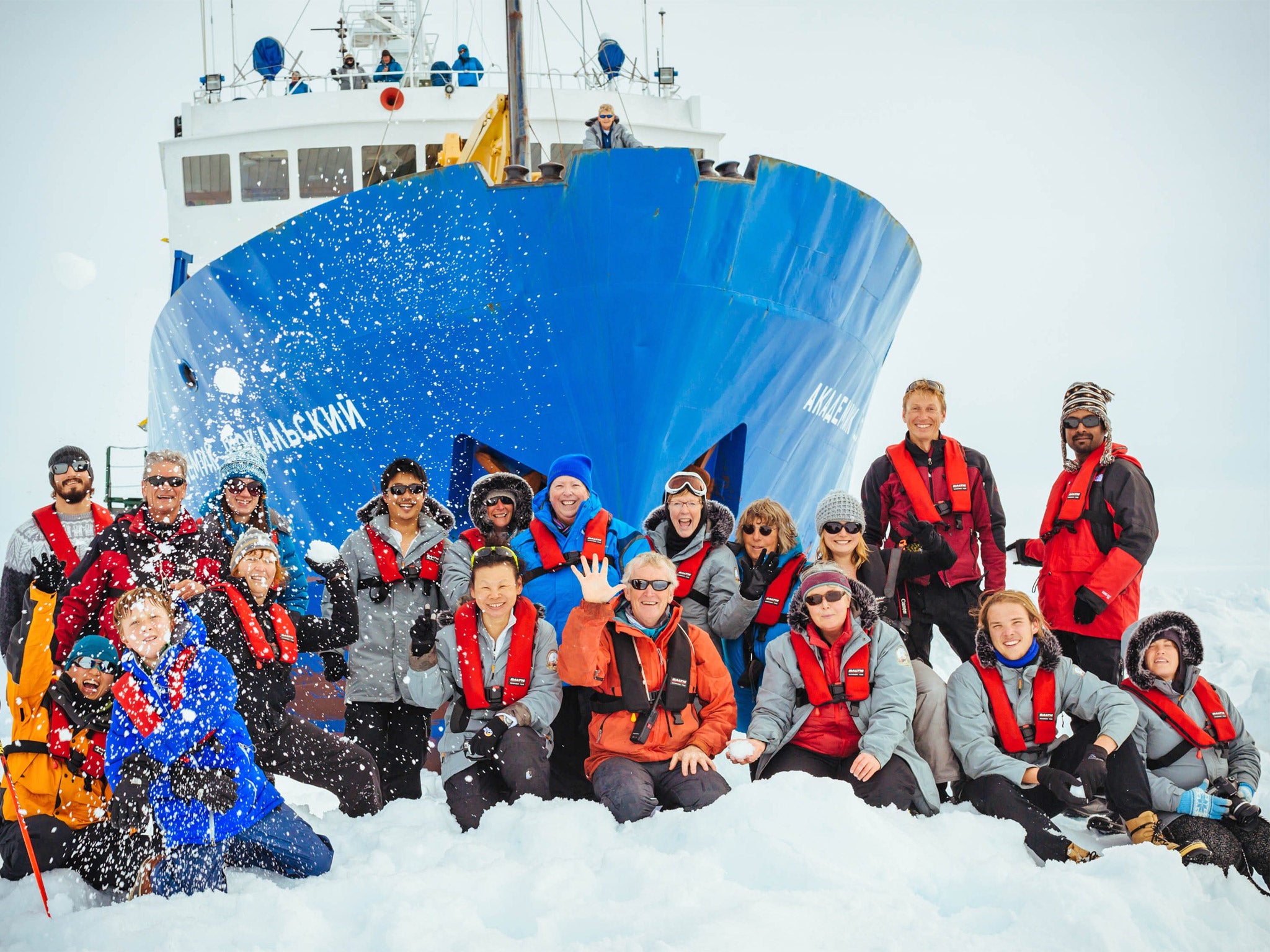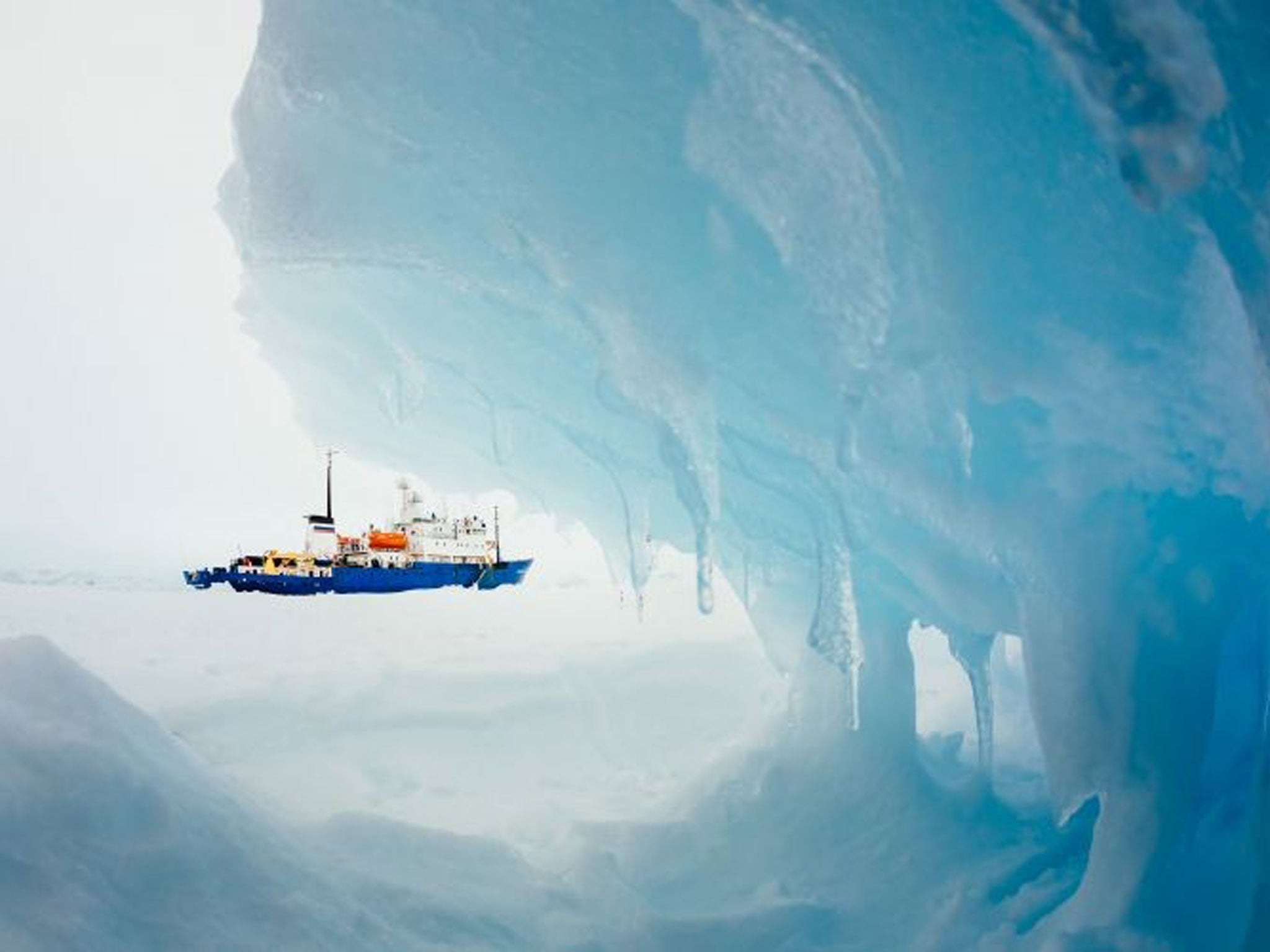Communication breakdown on board the Akademik Shokalskiy blamed for the ship being stranded in Antarctic ice over Christmas

Your support helps us to tell the story
From reproductive rights to climate change to Big Tech, The Independent is on the ground when the story is developing. Whether it's investigating the financials of Elon Musk's pro-Trump PAC or producing our latest documentary, 'The A Word', which shines a light on the American women fighting for reproductive rights, we know how important it is to parse out the facts from the messaging.
At such a critical moment in US history, we need reporters on the ground. Your donation allows us to keep sending journalists to speak to both sides of the story.
The Independent is trusted by Americans across the entire political spectrum. And unlike many other quality news outlets, we choose not to lock Americans out of our reporting and analysis with paywalls. We believe quality journalism should be available to everyone, paid for by those who can afford it.
Your support makes all the difference.A failure to respond to an order from the ship's captain may have played a critical role in the operational fiasco that led to the stranding of the Akademik Shokalskiy in thick Antarctic sea ice on Christmas Eve.
Serious questions have been raised about the behaviour of the expedition scientists who led a group of tourists and journalists onto the ice without properly planning for the rapid evacuation ordered by the ship's captain as he became increasingly concerned about being trapped by sea ice.
Delays of several hours in getting the passengers back on the Akademik Shokalskiy meant that it was surrounded by ice as it eventually made its way north, leading to it being trapped over Christmas and New Year and causing the launch of an international rescue effort involving four other ships and maritime agencies from five countries.
Eye witness accounts suggest that expedition leader Professor Chris Turney of the University of New South Wales appeared not to respond to requests from his co-leader, Greg Mortimer, for the passengers on the ice to return to the ship. Some passengers who had remained on the ship also reported that Captain Igor Kiselev and his crew were frustrated and angry with the delay because they had seen slabs of sea ice moving into the open water channel from which the ship had entered the area.
“A passenger standing near Professor Turney overheard the voyage leader, Greg Mortimer, telling him over the radio to bring passengers back to the ship so it can leave. Minutes later, Professor Turney drove six more passengers into the field,” according to a report in the Sydney Morning Herald.

Andrew Luck-Baker, a BBC radio producer who was one of the four journalists on the expedition, said that most of the 52 passengers were fee-paying tourists and there were chaotic scenes on the ice during the period when Captain Kiselev was trying to get them back to the ship.
“The expedition leaders could have some tough questions to face about logistical shortcomings that may have put the vessel at increased risk of becoming trapped. These were operational errors and mishaps during a visit by scientists and tourists to a location close to the Antarctic shore on 23 December,” Mr Luck-Baker said.
Groups of tourists were taken from the ship onto the ice connected to the Antarctic mainland. Some of them were being ferried to rocky outcrops called the Hodgeman Island some 8km (5 miles) away by quad bikes and amphibious argos vehicles after being told they would have a maximum of one hour to explore the area.
“However, there was a lack of organisation to supervise and enforce it. A number of us were at the islands for about two hours, having wandered off in small groups with the scientist whose work we were particularly interested in. In the thrilling environment in which we now found ourselves, it was easy to lose track of time,” Mr Luck-Baker said.
Insurance companies and maritime agencies are now investigating the circumstances the led up the Shokalskiy being trapped to see whether human error played any part. Four other Antarctic vessels had to be diverted from their duties for the rescue, and one of them, the Chinese registered Xue Long, also became trapped after it had airlifted the stranded passengers to the safety of a third ship, the Australian-registered Aurora Australis.

“There was a delay of a couple of hours on extracting people from the ice on the Hodgeman Islands and getting them on to the ship to leave the area. The delays may or may not have led us to getting stuck,” Dr Mortimer told BBC news.
“During the period of people being on shore at the Hodgeman Islands, the Russian captain said the ice is starting to close around us at which point we hit the evacuation button,” he said.
The expedition, which The Independent understands was sailing under a tourist permit rather than a research permit, has been criticised by some seasoned Antarctic scientists. One researcher told The Independent: “If the expedition was so important for science, why did Chris Turney take his wife and two children along with him?”
Professor Turney said: “The timeline in the SMH article is inaccurate. I strongly reject any suggestion that I would knowingly put the safety of my team members at risk.”
The Shokalskiy and Xue Long have since worked their way free of the ice. The Shokalskiy returned to New Zealand last week and the Aurora Australis sailed into Hobart, Tasmania with the Shokalskiy passengers on Monday.
Join our commenting forum
Join thought-provoking conversations, follow other Independent readers and see their replies
Comments